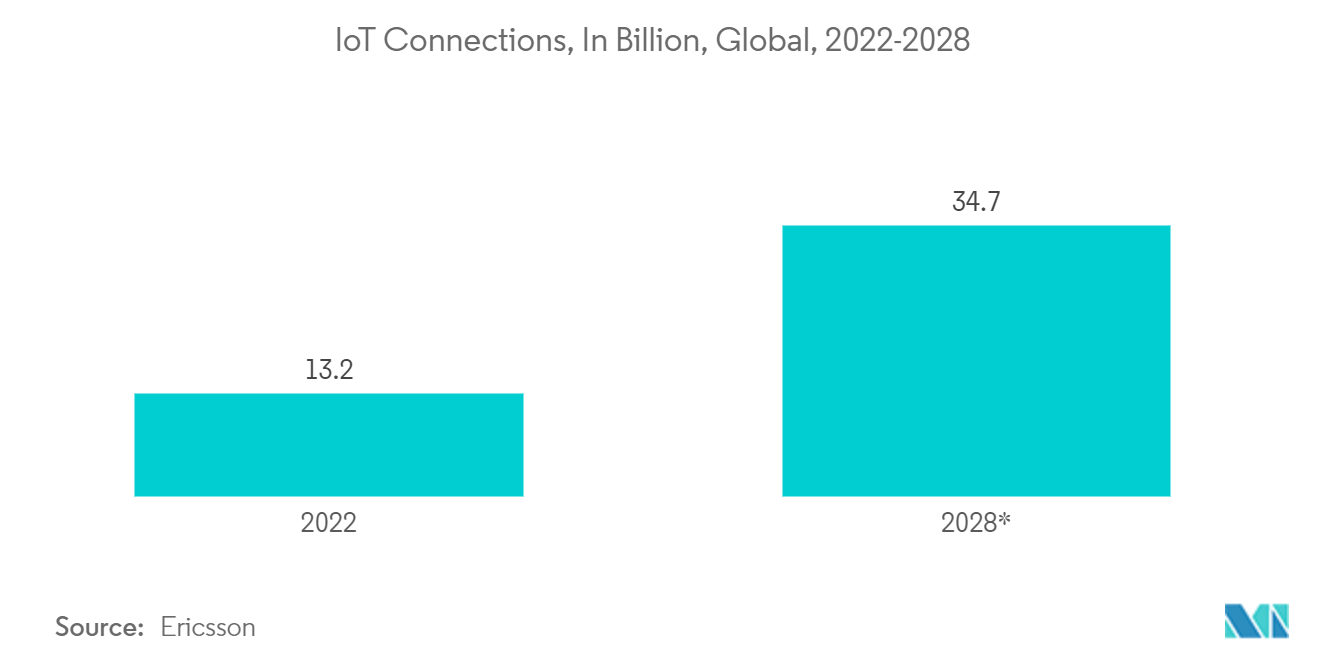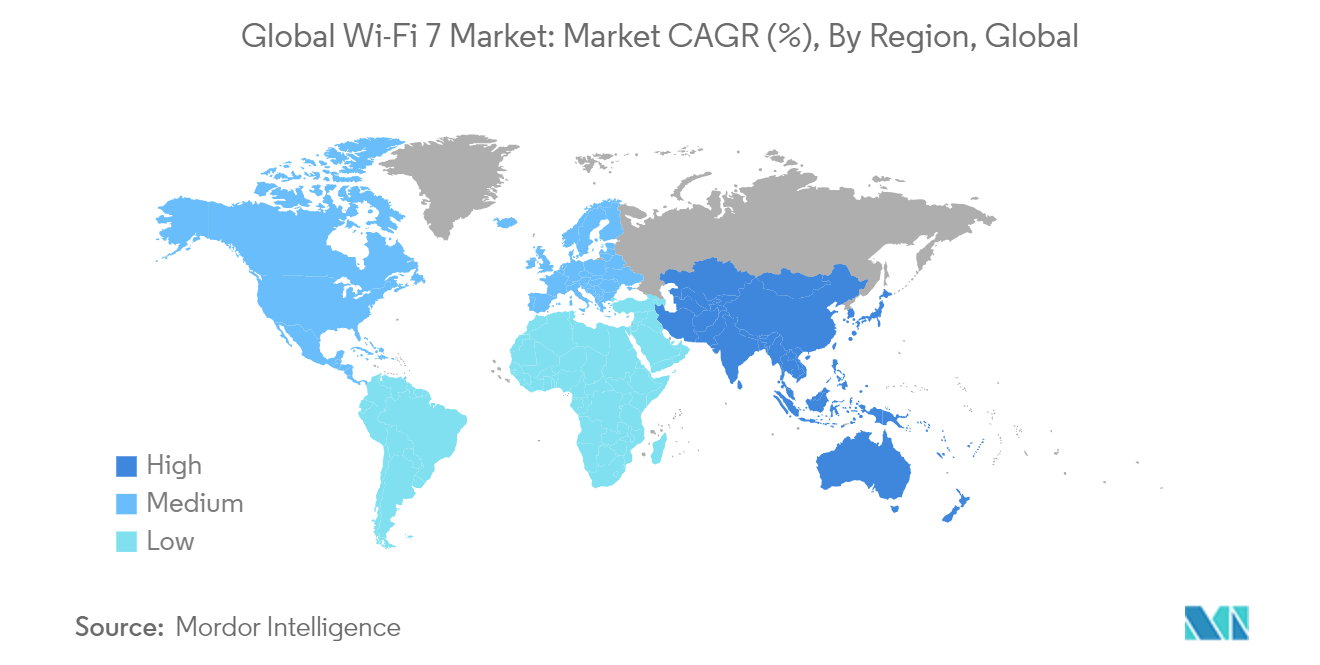Market Trends of Wi-fi 7 Industry
Ongoing Smart City Projects Focused on Deployment of Outdoor Wi-Fi in Emerging Regions
- As smartphones have a combination of volume and heavy data usage across a wide variety of applications in both consumer and enterprise settings, the need for high bandwidth with flexibility is increasing. As technology evolves, market vendors have been getting the increased need for higher data rates, lower latency, and better network capacity, thus creating opportunities in advanced technologies such as Wi-Fi 7.
- In 2022, the International Telecommunication Union (ITU) estimated that 5.3 billion people, or 66% of the world's population, utilize the Internet. This marks a 24% growth from 2019, with an expected 1.1 billion people joining the Internet throughout that time. Such a rise in internet penetration will significantly create opportunities for local and international Wi-Fi 7 vendors to introduce new products and increase the bandwidth to capture the major market share.
- In addition to providing free public Internet access, smart cities use Wi-Fi for various purposes, including e-routing traffic, monitoring air pollution, conserving water and connection, and cooperating with locals while ensuring their safety. For instance, Wi-Fi connection is becoming a more important amenity for both locals and visitors. It can be vital for tourists who may want continual access to navigation and sightseeing, especially if they are traveling abroad and wish to avoid exorbitant roaming fees. The rise in smart cities will create a positive impact on the market.
- Various governments in the American region are also promoting the adoption of smart cities and, therefore, the adoption of Wi-Fi 7. For instance, Las Vegas is testing three pilot projects, with the government allocating USD 500 million to find ways to connect the entire city by 2025. The increase in the number of smart city projects undertaken by governments is another factor influencing the demand for the Wi-Fi router market.
- Further, national governments aiding the expansion of smart city projects is also a key trend in the market. With the help of the Ministry of Housing and Urban Affairs in India, the nation aims to develop 4,000 cities to house a population of 5,00,000 each by 2023. Therefore, as indicated in the graph, the growing IoT with the smart cities is analyzed to create significant demand for the Wi-Fi 7 technology during the forecast period.

North America is Analyzed to Hold Largest Share in the Market
- The North American region consists of two developed economies, the USA and Canada. The growing adoption of smart factories in the region is the primary factor driving the market growth in North America. Wi-Fi chipsets, industrial PCs, gateway devices, PLCs, industrial robots, and wireless sensors are all broadly used in the systems of smart factories. High-growth prospects are being created for the Wi-Fi 7 market by expanding wirelessly connected devices and IoT infrastructure in smart factories.
- Smart home adoption in the region is increasing due to the demand for energy-saving and low-emission solutions. An essential component of a nation's economic prosperity is energy efficiency. As a result of escalating global warming and governmental laws, there has been an increasing demand to minimize energy use and carbon emissions in the region. Smart homes need smart devices to be functional, which is creating an opportunity for Wi-Fi 7 in North America.
- Further, many global and regional companies are developing advanced Wi-Fi Chipsets to integrate those into the smart devices in the region. For example, in March 2022, Broadcom, an American company, supplied a billion Wi-Fi 6/6E chips, out of which 500 million Wi-Fi 6/6E chips were supplied in a year. The company will produce Wi-Fi 7 chipsets in the future according to the need.
- In August 2022, Qualcomm Technologies committed to spending an additional USD 4.2 billion, bringing the total amount spent on semiconductor chips produced at a US facility of GlobalFoundries to USD 7.4 billion, out of which the USD 3.2 billion contracts with the corporation cover chips for 5G transceivers, Wi-Fi, vehicles, and the Internet of Things (IoT). Qualcomm announced that it has secured wafer supply and pledges to increase the capacity of GlobalFoundries' New York factory by the end of 2028, which will drive the Wi-Fi-Chipset market in the region.
- Canada has also decided to open up 6GHz for Wi-Fi, joining many other nations. According to ISED, the largest Wi-Fi improvement for all Canadians would be brought about by the 6 GHz spectrum modification. The industry anticipates Wi-Fi 7 to launch by 2024 with still another significant increase in bandwidth, even though Wi-Fi 6E devices have only recently launched. These factors are significantly contributing to the Wi-Fi 7 market growth in the region.


